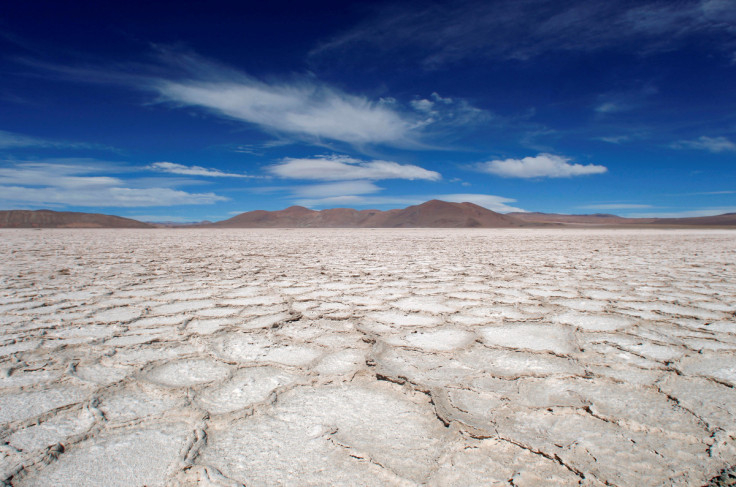Argentina's Lithium Pipeline Promises 'White Gold' Boom As Chile Tightens Control

In Argentina's mountainous north, a strong pipeline of lithium projects close to coming online looks set to unlock a wave of production that could see its output of the key electric vehicle battery metal as much as triple within the next two years.
The world's fourth largest producer of the silvery-white metal sits within the so-called "lithium triangle" and has been luring investment from Canadian to Chinese mining firms with a regional and market-led model, even as a wave of resource nationalism has spread in the region.
Neighboring Chile, the region's top lithium producer, last week unveiled plans for a state-led public-private model, spooking investors. Bolivia has long maintained strict control over its huge though largely untapped resources, while Mexico nationalized its lithium deposits last year.
In Argentina, despite state energy firm YPF starting to explore for lithium last year, the sector has largely been driven by private enterprise and regular approvals of new projects as the government has looked to bring in more export dollars through mining, a rare bright spot amid economic turmoil.
"Argentina has granted concessions to projects for the last 10 years," said Franco Mignacco, president of Argentina's Chamber of Mining Business. "That's why today we have this level of lithium investment and development and the chance of growth."
Mignacco estimated that Argentina's current 40,000 tonnes of lithium carbonate production could triple by 2024-2025 to 120,000 tonnes, which could take it past China and closer to Chile which currently produces some 180,000 tonnes per year.
That would be driven by new projects coming online on top of the two currently in production. The country has six lithium projects under construction and 15 in the advanced exploration or feasibility stage, Mignacco said.
That contrasts with Chile, where the industry is dominated by established players SQM and Albemarle, with few new projects underway. In Bolivia the government only recently okayed a new project by a Chinese consortium.
Argentina's production boost would come from the expansion of the only two producing operations - U.S. firm Livent's Fenix project in Catamarca and Australian Allkem Ltd's Salar de Olaroz mine in Jujuy - both expected to double output to 42,500 tonnes in the years ahead.
These would be joined by the Cauchari-Olaroz project, owned by China's Ganfeng Lithium Co and Canada's Lithium Americas Corp, which in the second half of 2023 is set to begin production with capacity for 40,000 tonnes of lithium carbonate.
'PRO-MARKET STRATEGY'
Argentina, Bolivia and Chile together sit atop half of the world's resources of the mineral under otherworldly salt flats in the high-altitude Andean plains.
But strategies for developing it are diverging.
"Argentina's lithium sector has thrived through a decentralized, pro-market strategy," said Benjamin Gedan, director of the Latin America program at The Wilson Center, adding in contrast Bolivia's lithium sector had "repeatedly stalled as a result of excessive state control."
Chile, he said, may have found a "savvy middle ground" with its public-private model, which would hand the state majority control over all new lithium projects in a nationalist shift, but would still give private enterprise a key role to play.
The wave of resource nationalism had prompted some talk amongst officials of a potential OPEC-style lithium cartel in the region, though analysts see it as unrealistic given the diverse industry models and levels of development.
Argentina, meanwhile, faces challenges including economic turmoil with high inflation and capital controls which complicate business, while the country is headed for general elections in October creating political uncertainty.
Its lithium pipeline, though, may keep the sector bubbling and even gaining ground on rivals. Overtaking neighbor Chile would be highly unlikely but some analysts were aiming high.
"Chile today produces and exports much more lithium than Argentina," said Natacha Izquierdo, analyst at consultancy ABCEB. "But if the projects we have here today come to fruition, Argentina could overtake it."




© Copyright Thomson Reuters 2024. All rights reserved.





















